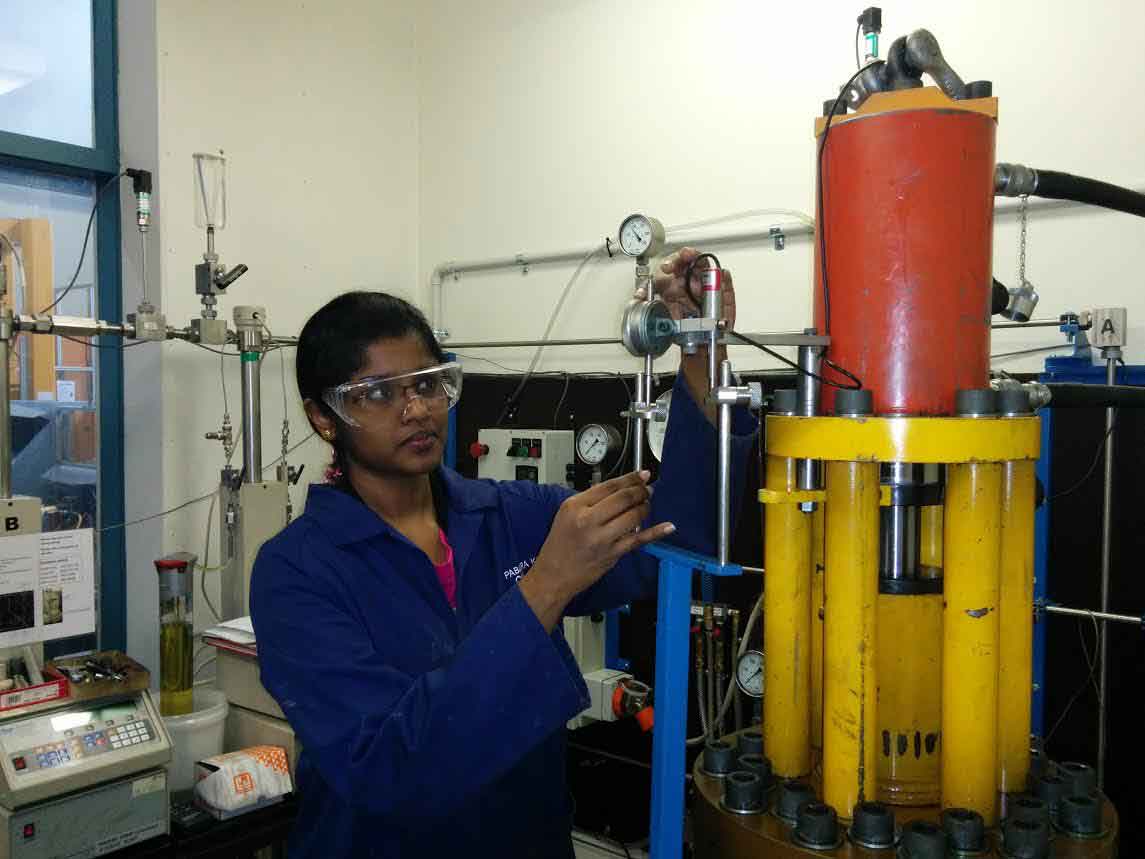There is an enormous potential for power generation with geothermal energy however, at present commercial geothermal energy production is limited conventional geothermal resources. Enhanced or engineered geothermal systems (EGS) are considered unconventional geothermal resources which adapt engineering techniques to enhance the factors affecting geothermal energy production. Considering EGS systems, hot dry rock (HDR) systems are identified as potential geothermal resources which are primarily consist of granite with high temperature but very low permeability and little amount of stored fluid. Therefore stimulation techniques such as hydraulic fracturing, acid fracturing are adapted in order to enhance the permeability of the rock. Higher flow rate and thermodynamic efficiency of the circulation fluid determines the economics of the EGS. It is important to create interconnected fracture network with high transitivity for higher flow rate and sufficient residence time with contacting hot dry rocks. However, it is a real challenge to maintain both conditions together. Large volume of interconnected fracture network with small aperture and circulation fluid with favourable heat transmission characteristics is important to achieve this requirement. Considering the previous attempts of EGS development in the world, water has used as the fracturing and heat transmission fluid however, there are number of problems associated with water such as scarcity of water, contamination problems and higher solvent capacity of rock minerals at elevated temperatures which result reduction of fracture permeability with time. Therefore, non-water based fracturing fluids for reservoir stimulation has attracted geothermal community and supercritical CO2 has identified with favourable thermodynamic properties. Further, numerical simulations have confirmed that advantages of CO2 over water in terms of higher energy extraction rates. However, performs CO2 as fracturing fluid, geochemical issues as a result of aqueous solutions of CO2, structural changes associated with rock fluid interactions under geothermal conditions are poorly understood.
Therefore, this project aims to understand the coupled effects of hydro-thermo-mechanical and chemical behaviour of granite at geothermal conditions with hydraulic stimulation with water and super critical CO2 as a working fluid and further, to understand optimum conditions to enhance permeability with hydraulic stimulation with water and scCO2. This study is consist of a series of experimental works to address these issues; which utilize the newly developed advanced high pressure and high temperature tri-axial set up available in the 3GDeep Laboratory. Tri-axial experiments will be conducted for different granite rock, at various temperatures (20 to 300◦C), confining pressures (up to 150 MPa) and water and scCO2 injection pressures (up to 150 MPa) by simulating different geothermal conditions and rocks at different depths. In addition, to understand the chemical interactions between granite scCO2 and water at geothermal conditions, detail chemical and mineralogical study will be conducted with SEM, XRD, XRF and ICP-MS/ AES analysis. Also, the CT scanner and SEM analysis will be used to study the pore structure variation due to water and CO2 injection into the sample under various test conditions.
This knowledge is then used to develop theoretical and empirical equations for strength criteria and flow behaviour of fractured rock incorporating temperature and pressure influence. Firstly, a lab scale model will be developed to study the mechanical and flow behaviour of granite under tri-axial tests conditions and it will be extended to a more comprehensive coupled thermo-hydro-mechanical model which simulate the field condition. Findings of this study will contribute to unconventional EGS technology and Australian economy which seek novel approach for commercial EGS energy production.

